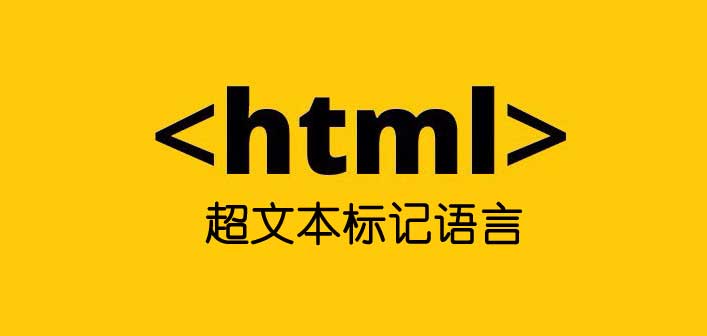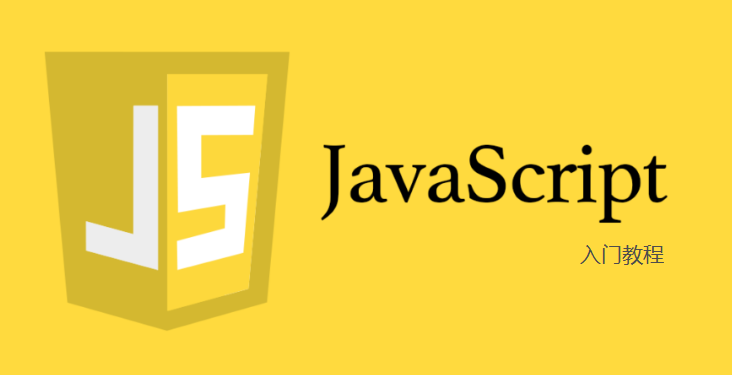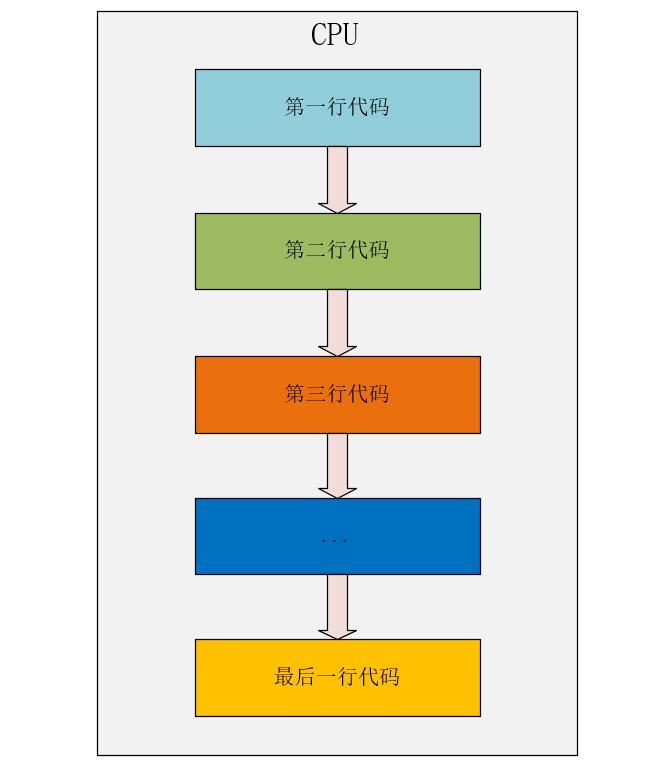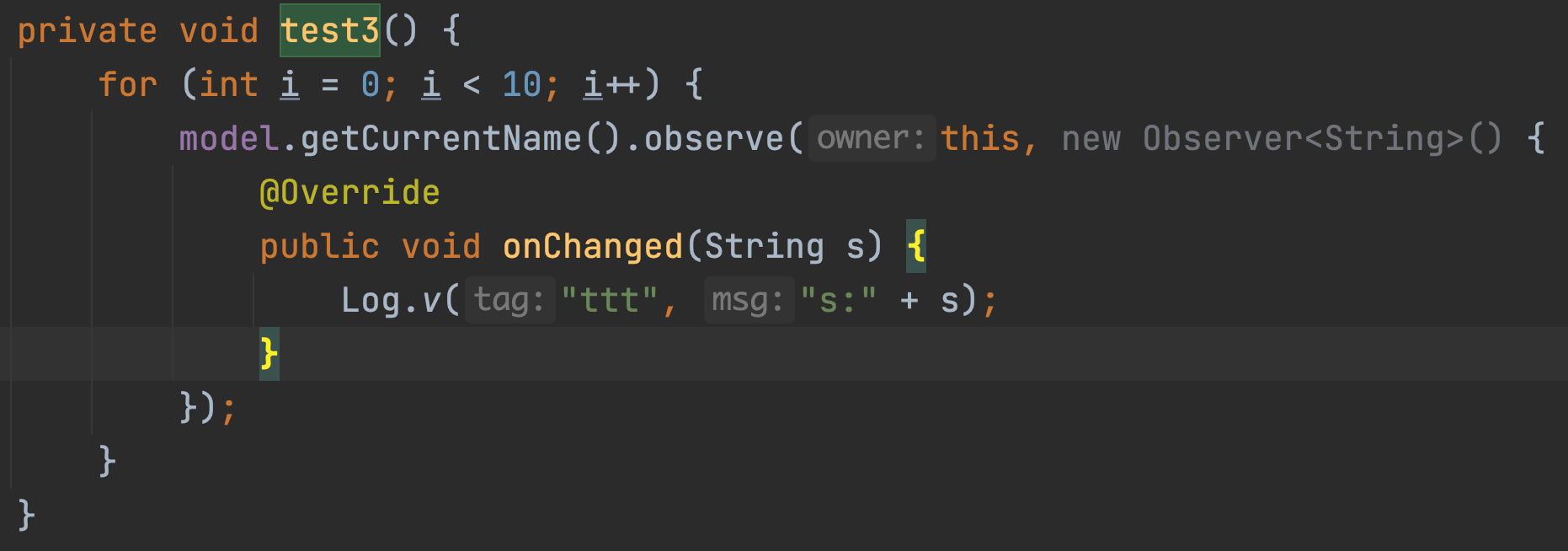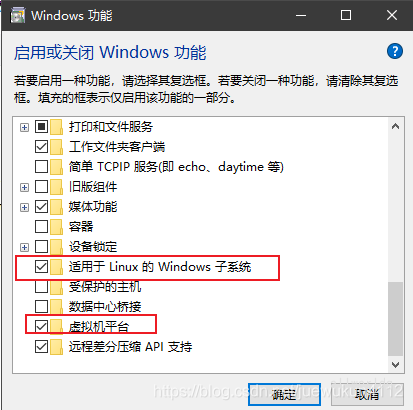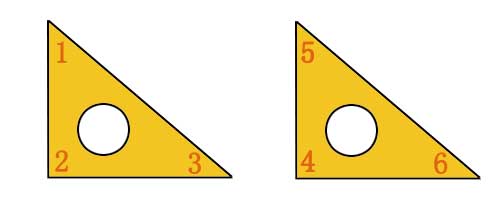open policy agent 语法总结
OPA 文档模型
OPA将从外部加载的数据成为基本文档(base documents),有规则产生的值成为虚拟文档(virtual documents),此处"虚拟"的意思表示文档由策略进行了计算,且不是外部加载的。Rego中可以使用名为data的全局变量访问这两种数据。
异步加载的基本文档可以通过data全局变量进行访问。另一方面,如果软件需要查询OPA来获取策略决策时,也可以将基础文档同步推入或拉入OPA,此时需要通过input全局变量来引用同步推送的基本文档。同步加载的数据保存在data之外,防止命名冲突。
逻辑与
{
"servers": [
{"id": "app", "protocols": ["https", "ssh"], "ports": ["p1", "p2", "p3"]},
{"id": "db", "protocols": ["mysql"], "ports": ["p3"]},
{"id": "cache", "protocols": ["memcache"], "ports": ["p3"]},
{"id": "ci", "protocols": ["http"], "ports": ["p1", "p2"]},
{"id": "busybox", "protocols": ["telnet"], "ports": ["p1"]}
],
"networks": [
{"id": "net1", "public": false},
{"id": "net2", "public": false},
{"id": "net3", "public": true},
{"id": "net4", "public": true}
],
"ports": [
{"id": "p1", "network": "net1"},
{"id": "p2", "network": "net3"},
{"id": "p3", "network": "net2"}
]
}
OPA使用;来表示逻辑AND
域名ers[0].id == "app"; 域名ers[0].protocols[0] == "https"
$ true
也可以使用多行来忽略;
域名ers[0].id == "app"
域名ers[0].protocols[0] == "https"
$ rue
如果引用的内容不存在或匹配失败,则返回的结果为undefined
s := 域名ers[0]
域名 == "app1"
$undefined decision
s := 域名ers[1110]
域名 == "app1"
$ undefined decision
变量
OPA的变量一旦赋值之后就是不可变的:
s := 域名ers[0]
s := 域名ers[1]
$ 1 error occurred: 2:1: rego_compile_error: var s assigned above
迭代
找出连接到public网络的ports的id,下面使用some关键字定义循环的变量,使用id变量提取符合要求的ports的id,最后一行域名orks[j].public也可以写为域名orks[j].public==true,同时注意条件之间是逻辑与的关系
some i, j
id := 域名s[i].id
域名s[i].network == 域名orks[j].id
域名orks[j].public
$ +---+------+---+
| i | id | j |
+---+------+---+
| 1 | "p2" | 2 |
+---+------+---+
可以使用下划线_(通配符)进行遍历,使用下划线来表示实例的单独变量。如使用如下方式找出域名ers中协议为http的id
s := 域名ers[_]
id := 域名
域名ocols[_] == "http"
$ true
规则(Rules)
使用规则可以重用判定逻辑,可以看作是一种函数实现。规则可以是"完整(complete)"或"部分(partial)"的。
完整规则
每个规则都包含一个head和一个body,如下head为any_public_networks = true ,body为net := 域名orks[_]; 域名ic。如果忽略= <value>部分(= <value>用于使用右值赋予左边的变量,如apps_by_hostname[hostname] = app,key为hostname,value为app),则默认为true。
package 域名s
any_public_networks = true { # is true if...
net := 域名orks[_] # some network exists and..
域名ic # it is public.
}
可以为规则定义默认值,这样在结果返回"undefined decision"时,会将any_public_networks置为false
package 域名s
default any_public_networks = false
any_public_networks = true { # is true if...
net := 域名xist_networks[_] # some network exists and..
域名ic # it is public.
}
any_public_networks
$ false
可以使用如下方式进行访问:
any_public_networks
$ true
也可以使用全局变量data进行访问,访问方式为data.<package-path>.<rule-name>
域名域名public_networks
$ true
可以使用如下方式定义常量
package 域名tants
pi := 域名
部分规则
head为public_network[域名],body为net := 域名orks[_]; 域名ic,可以看作是带返回值的函数
package 域名s
public_network[域名] { # 域名 is in the public_network set if...
net := 域名orks[_] # some network exists and...
域名ic # it is public.
}
可以遍历返回值
public_network[_]
$ +-------------------+
| public_network[_] |
+-------------------+
| "net3" |
| "net4" |
+-------------------+
逻辑或
完整规则的逻辑或
使用逻辑或时,要求多条规则的名称相同。如下用于校验servers是否暴露了telnet或ssh协议:
package 域名cal_or
default shell_accessible = false
shell_accessible = true {
域名ers[_].protocols[_] == "telnet"
}
shell_accessible = true {
域名ers[_].protocols[_] == "ssh"
}
部分规则的逻辑或
如下规则用于找出协议为telnet或ssh的server的id:
package 域名cal_or
shell_accessible[域名] {
server := 域名ers[_]
域名ocols[_] == "telnet"
}
shell_accessible[域名] {
server := 域名ers[_]
域名ocols[_] == "ssh"
}
rego语法
标量
rego支持字符串、数字、布尔和null
greeting := "Hello"
max_height := 42
pi := 域名9
allowed := true
location := null
字符串
支持两种类型的字符串:双引号包围的字符串和原始字符串,后者一般用于正则表达式。
复合值
定义了数值集合
cube := {"width": 3, "height": 4, "depth":true}
域名h
$ true
对象
可以看作golang的map
ips_by_port := {
80: ["1.1.1.1", "1.1.1.2"],
443: ["2.2.2.1"],
}
ips_by_port[80]
$ [
"1.1.1.1",
"1.1.1.2"
]
数组
数组使用下标进行索引
s1 := [1, 2, 3]
s2 := [2, 1, 3]
s1[1]
$ 2
s1 == s2
$ false
集合
它是唯一值的无序集合。它没有key,且无法使用下标进行索引。注意在解析为JSON格式时,集合体现为数组格式。
s1 := {1, 2, 3}
s2 := {2, 1, 3}
s1 == s2
$ true
变量
变量位于规则的head和body,规则head中的变量可以认为是输入或输出,如果提供了确定的值,则认为是输入,否则认为是输出。例如:
sites := [
{"name": "prod"},
{"name": "smoke1"},
{"name": "dev"}
]
q[name] { name := sites[_].name }
如下x并没有绑定到某个值,则返回所有x和q[x]的值
q[x]
$ +----------+----------+
| x | q[x] |
+----------+----------+
| "dev" | "dev" |
| "prod" | "prod" |
| "smoke1" | "smoke1" |
+----------+----------+
如下"dev"是一个确定的值,作为输入,用于判断name中是否存在该值
q["dev"]
$ "dev"
引用
有两种方式访问嵌套文档:点访问方式和方括号访问方式,如下:
sites[0].servers[1].hostname
sites[0]["servers"][1]["hostname"]
变量键
引用可以使用变量作为键,这种方式用于选择所有元素的值
sites[i].servers[j].hostname
$ +---+---+------------------------------+
| i | j | sites[i].servers[j].hostname |
+---+---+------------------------------+
| 0 | 0 | "hydrogen" |
| 0 | 1 | "helium" |
| 0 | 2 | "lithium" |
| 1 | 0 | "beryllium" |
| 1 | 1 | "boron" |
| 1 | 2 | "carbon" |
| 2 | 0 | "nitrogen" |
| 2 | 1 | "oxygen" |
+---+---+------------------------------+
如果迭代时不需要用到变量,则可以使用下划线_
sites[_].servers[_].hostname
$ +------------------------------+
| sites[_].servers[_].hostname |
+------------------------------+
| "hydrogen" |
| "helium" |
| "lithium" |
| "beryllium" |
| "boron" |
| "carbon" |
| "nitrogen" |
| "oxygen" |
+------------------------------+
复合键
s := {[1, 2], [1, 4], [2, 6]}
s[[1, 2]]
$ [
1,
2
]
s[[1, x]]
$ +---+-----------+
| x | s[[1, x]] |
+---+-----------+
| 2 | [1,2] |
| 4 | [1,4] |
+---+-----------+
多表达式
规则通常是多表达式的,包含到documents的引用。下面定义了一个数组,每个数组包含一个服务的应用名称和主机名称
apps_and_hostnames[[name, hostname]] {
some i, j, k
name := apps[i].name
server := apps[i].servers[_]
sites[j].servers[k].name == server
hostname := sites[j].servers[k].hostname
}
apps_and_hostnames[x]
$ +----------------------+-----------------------+
| x | apps_and_hostnames[x] |
+----------------------+-----------------------+
| ["mongodb","oxygen"] | ["mongodb","oxygen"] |
| ["mysql","carbon"] | ["mysql","carbon"] |
| ["mysql","lithium"] | ["mysql","lithium"] |
| ["web","beryllium"] | ["web","beryllium"] |
| ["web","boron"] | ["web","boron"] |
| ["web","helium"] | ["web","helium"] |
| ["web","hydrogen"] | ["web","hydrogen"] |
| ["web","nitrogen"] | ["web","nitrogen"] |
+----------------------+-----------------------+
推导式
与规则类似,推导式有一个head和一个body。
region := "west"
names := [name | sites[i].region == region; name := sites[i].name]
$ +-----------------+--------+
| names | region |
+-----------------+--------+
| ["smoke","dev"] | "west" |
+-----------------+--------+
这与python中的推导式类似
# Python equivalent of Rego comprehension shown above.
names = [域名 for site in sites if 域名on == "west"]
数组推导式
格式如下:
[ <term> | <body> ]
app_to_hostnames[app_name] = hostnames {
app := apps[_]
app_name := 域名
hostnames := [hostname | name := 域名ers[_]
s := sites[_].servers[_]
域名 == name
hostname := 域名name]
}
app_to_hostnames[app]
$ +-----------+------------------------------------------------------+
| app | app_to_hostnames[app] |
+-----------+------------------------------------------------------+
| "mongodb" | ["oxygen"] |
| "mysql" | ["lithium","carbon"] |
| "web" | ["hydrogen","helium","beryllium","boron","nitrogen"] |
+-----------+------------------------------------------------------+
对象推导式
格式如下:
{ <key>: <term> | <body> }
注意key不能有冲突
app_to_hostnames := {域名: hostnames |
app := apps[_]
hostnames := [hostname |
name := 域名ers[_]
s := sites[_].servers[_]
域名 == name
hostname := 域名name]
}
app_to_hostnames[app]
$ +-----------+------------------------------------------------------+
| app | app_to_hostnames[app] |
+-----------+------------------------------------------------------+
| "mongodb" | ["oxygen"] |
| "mysql" | ["lithium","carbon"] |
| "web" | ["hydrogen","helium","beryllium","boron","nitrogen"] |
+-----------+------------------------------------------------------+
集合推导式
格式如下:
{ <term> | <body> }
a := [1, 2, 3, 4, 3, 4, 3, 4, 5]
b := {x | x = a[_]}
$ +---------------------+-------------+
| a | b |
+---------------------+-------------+
| [1,2,3,4,3,4,3,4,5] | [1,2,3,4,5] |
+---------------------+-------------+
规则
集合
返回结果是一个集合
hostnames[name] { name := sites[_].servers[_].hostname }
hostnames[name]
$ +-------------+-----------------+
| name | hostnames[name] |
+-------------+-----------------+
| "beryllium" | "beryllium" |
| "boron" | "boron" |
| "carbon" | "carbon" |
+-------------+-----------------+
对象
返回结果是一个可检索的对象
apps_by_hostname[hostname] = app {
some i
server := sites[_].servers[_]
hostname := 域名name
apps[i].servers[_] == 域名
app := apps[i].name
}
apps_by_hostname["helium"]
$ "web"
增量定义
增量定义实际就是逻辑或
如下,将servers 和containers 数据抽象为 instances:
instances[instance] {
server := sites[_].servers[_]
instance := {"address": 域名name, "name": 域名}
}
instances[instance] {
container := containers[_]
instance := {"address": 域名dress, "name": 域名}
}
完整定义
除了使用部分规则定义集合和对象,还可以使用完整规则,完整规则忽略了head中的key,通常用于表示常量
pi := 域名9
完整定义一次性赋予一个值,如下将32和4赋值给max_memory就会发生错误
# Power users get 32GB memory.
max_memory = 32
# Restricted users get 4GB memory.
max_memory = 4
$ 域名:8: eval_conflict_error: complete rules must not produce multiple outputs
使用:=时,每个包中只能声明一个相同名称的完整定义:
package example
pi := 域名
# some other rules...
pi := 域名6 # Redeclaration error because \'pi\' already declared above.
函数
Rego支持自定义函数,这些函数可以与内置函数一样调用。函数可以有任意多个输入,但只能有一个输出
trim_and_split(s) = x {
t := trim(s, " ")
x := split(t, ".")
}
trim_and_split(" 域名 ")
$ [
"foo",
"bar"
]
一个函数可以定义多次,用于实现通过条件来选择所要执行的函数:
q(1, x) = y {
y := x
}
q(2, x) = y {
y := x*4
}
q(1, 2)
$ 2
q(2, 2)
$ 8
但在调用时需要注意,入参不能匹配多个函数
r(1, x) = y {
y := x
}
r(x, 2) = y {
y := x*4
}
r(1, 2)
$ 域名:3: eval_conflict_error: functions must not produce multiple outputs for same inputs
注意,如果无法匹配到函数,则结果是未定义的:
s(x, 2) = y {
y := x * 4
}
s(5, 3)
$ undefined decision
否定
t {
greeting := "hello"
not greeting == "goodbye"
}
t
$ true
下面用于分别找出在和不在prod环境的app:
prod_servers[name] {
site := sites[_]
域名 == "prod"
name := 域名ers[_].name
}
apps_in_prod[name] {
app := apps[_]
server := 域名ers[_]
prod_servers[server] #过滤出在prod的app,行与行之间是与的关系,如果不存在则不会执行下一个语句,即name不会被赋值
name := 域名
}
apps_not_in_prod[name] {
name := apps[_].name
not apps_in_prod[name]
}
全量(FOR ALL)
Rego没有直接的方式来表示全量("FOR ALL")。例如需要找出名称非"bitcoin-miner"的app时,使用如下方式是错误的,无论apps中是否存在名为"bitcoin-miner"的app,最终都会返回true
no_bitcoin_miners {
app := apps[_]
域名 != "bitcoin-miner" # THIS IS NOT CORRECT.
}
可以使用如下方式来实现上述目的:
no_bitcoin_miners_using_negation {
not any_bitcoin_miners
}
any_bitcoin_miners {
some i
app := apps[i]
域名 == "bitcoin-miner"
}
此外还可以使用推导式实现:
no_bitcoin_miners_using_comprehension {
bitcoin_miners := {app | app := apps[_]; 域名 == "bitcoin-miner"}
count(bitcoin_miners) == 0
}
模块
在rego中,策略被定义在模块中,一个模块需要包含:
- 声明一个package
- 零个或多个import语句
- 零个或多个Rule定义
注释
使用#进行注释
package
包可以将一个或多个模块中的规则打包到特定的命名空间中。
import
模块中可以使用data和input引用文本
如在 域名ssion中定义了一个规则 deny:
package 域名ssion
deny[msg] {
域名.kind == "Pod"
some i
image := 域名域名ainers[i].image
not startswith(image, "域名/")
msg := sprintf("image \'%v\' comes from untrusted registry", [image])
}
在另一个包中可以通过如下方式引用deny规则:
{
"user": "alice",
"action": "read",
"object": "id123",
"type": "dog"
}
package 域名
import 域名ssion
deny[域名]
some关键字
With 关键字
with关键字允许查询以编程方式指定嵌套在input 文档 和data 文档下的值。with关键字充当表达式的修饰符。一个表达式可以有零或多个with修饰符。
格式如下,域名,如果策略试图替换域名.baz,那么编译器将产生错误)。
<expr> with <target-1> as <value-1> [with <target-2> as <value-2> [...]]
举例如下:
allow with input as {"user": "charlie", "method": "GET"} with 域名s as {"dev": ["charlie"]}
with关键字仅影响连接表达符,后续表达式将看到未修改的值。下面是一种例外(域名=1,域名=2),outer中的输入在middle中进行了计算
inner := [x, y] {
x := 域名
y := 域名
}
middle := [a, b] {
a := inner with 域名 as 100
b := input
}
outer := result {
result := middle with input as {"foo": 200, "bar": 300} #middle中修改了a
}
{
"inner": [
1,
2
],
"middle": [
[
100,
2
],
{
"bar": 2,
"foo": 1
}
],
"outer": [
[
100,
300
],
{
"bar": 300,
"foo": 200
}
]
}
Default 关键字
default关键字允许策略为具有完整定义的规则生成的文档定义默认值。格式如下:
default <name> = <term>
用法如下,如果没有default,则会返回undefined
default allow = false
allow {
域名 == "bodddb"
域名od == "GEdddT"
}
allow {
域名 == "aliddce"
}
Else 关键字
与编程语言中的else类似
authorize = "allow" {
域名 == "superuser" # allow \'superuser\' to perform any operation.
} else = "deny" {
域名[0] == "admin" # disallow \'admin\' operations...
域名ce_network == "external" # from external networks.
} # ... more rules
操作符
成员和迭代:in
需要import 域名ords。成员操作符in用于检查一个元素是否存在于array, set, 或 object中,返回true或false。
import 域名
p = [x, y, z] {
x := 3 in [1, 2, 3] # array
y := 3 in {1, 2, 3} # set
z := 3 in {"foo": 1, "bar": 3} # object
}
{
"p": [
true,
true,
true
]
}
当在in操作符左侧提供两个参数,且右侧为object或array,则第一个参数作为key(object)或index(array):
import 域名
p := [ x, y ] {
x := "foo", "bar" in {"foo": "bar"} # key, val with object
y := 2, "baz" in ["foo", "bar", "baz"] # key, val with array
}
{
"p": [
true,
true
]
}
注意在列表(如集合或数组以及函数参数)上下文中需要使用圆括号来让两侧参数一一对应
import 域名
p := x {
x := { 0, 2 in [2] } #这是一个集合,表示0和2 in [2]
}
q := x {
x := { (0, 2 in [2]) }#这是一个集合,但计算的是0, 2 in [2]
}
w := x {
x := g((0, 2 in [2]))#g(x)只有一个参数,需要使用圆括号括起来
}
z := x {
x := f(0, 2 in [2])#f(x)有两个参数,第一个参数是0,第二个参数是2 in [2]
}
f(x, y) = sprintf("two function arguments: %v, %v", [x, y])
g(x) = sprintf("one function argument: %v", [x])
与not结合使用,可以很方便地断言一个元素是否是数组的成员:
import 域名
deny {
not "admin" in 域名s
}
test_deny {
deny with 域名s as ["operator", "user"]
}
{
"test_deny": true
}
使用some,可以根据不同的类型引入新的变量
import 域名
p[x] {
some x in ["a", "r", "r", "a", "y"]
}
q[x] {
some x in {"s", "e", "t"}
}
r[x] {
some x in {"foo": "bar", "baz": "quz"}
}
{
"p": [
"a",
"r",
"y"
],
"q": [
"e",
"s",
"t"
],
"r": [
"bar",
"quz"
]
}
使用两个参数可以检索object的关键字和array的索引
import 域名
p[x] {
some x, "r" in ["a", "r", "r", "a", "y"] # key variable, value constant
}
q[x] = y {
some x, y in ["a", "r", "r", "a", "y"] # both variables
}
r[y] = x {
some x, y in {"foo": "bar", "baz": "quz"}
}
{
"p": [
1,
2
],
"q": {
"0": "a",
"1": "r",
"2": "r",
"3": "a",
"4": "y"
},
"r": {
"bar": "foo",
"quz": "baz"
}
}
some变量的任何参数都可以是复合的非基础值:
import 域名
p[x] = y {
some x, {"foo": y} in [{"foo": 100}, {"bar": 200}]#x为key为foo的数组索引,y为key为foo的值
}
p[x] = y {
some {"bar": x}, {"foo": y} in {{"bar": "b"}: {"foo": "f"}} # x为bar的值,y为foo的值
}
{
"p": {
"0": 100,
"b": "f"
}
}
等式:赋值,比较和联合
Rego支持三种等式:赋值(:=),比较()和联合(=)。建议使用赋值(:=)和比较()。
赋值 :=
可以使用一种简单的解构形式将数组中的值解包并将其分配给变量
address := ["3 Abbey Road", "NW8 9AY", "London", "England"]
in_london {
[_, _, city, country] := address
city == "London"
country == "England"
}
{
"address": [
"3 Abbey Road",
"NW8 9AY",
"London",
"England"
],
"in_london": true
}
比较 ==
联合 =
Rego会将比较为真的值赋于变量。联合可以赋予变量使表达式为true的值。
sites[i].servers[j].name = apps[k].servers[m]
+---+---+---+---+
| i | j | k | m |
+---+---+---+---+
| 0 | 0 | 0 | 0 |
| 0 | 1 | 0 | 1 |
| 0 | 2 | 1 | 0 |
| 1 | 0 | 0 | 2 |
| 1 | 1 | 0 | 3 |
| 1 | 2 | 1 | 1 |
| 2 | 0 | 0 | 4 |
| 2 | 1 | 2 | 0 |
+---+---+---+---+
比较表达式
a == b # `a` is equal to `b`.
a != b # `a` is not equal to `b`.
a < b # `a` is less than `b`.
a <= b # `a` is less than or equal to `b`.
a > b # `a` is greater than `b`.
a >= b # `a` is greater than or equal to `b`.
内置函数
内置函数的格式如下:
<name>(<arg-1>, <arg-2>, ..., <arg-n>)
错误
默认情况下,遇到运行时错误的内置函数调用会将结果设为undefined (通常可以被视为false),且不会停止策略计算。这种方式可以保证在使用调用内置函数时,输入无效参数不会导致整个策略停止计算。
策略相关
Assignment and Equality
# assign variable x to value of field 域名 in input
x := 域名.baz
# check if variable x has same value as variable y
x == y
# check if variable x is a set containing "foo" and "bar"
x == {"foo", "bar"}
# OR
{"foo", "bar"} == x
Lookup
Arrays
# lookup value at index 0
val := arr[0]
# check if value at index 0 is "foo"
"foo" == arr[0]
# find all indices i that have value "foo"
"foo" == arr[i]
# lookup last value
val := arr[count(arr)-1]
# with `import 域名`
some 0, val in arr # lookup value at index 0
0, "foo" in arr # check if value at index 0 is "foo"
some i, "foo" in arr # find all indices i that have value "foo"
Objects
# lookup value for key "foo"
val := obj["foo"]
# check if value for key "foo" is "bar"
"bar" == obj["foo"]
# OR
"bar" == 域名
# check if key "foo" exists and is not false
域名
# check if key assigned to variable k exists
k := "foo"
obj[k]
# check if path 域名 exists and is not false
域名.baz
# check if path 域名, 域名, or foo does not exist or is false
not 域名.baz
# with `import 域名`
o := {"foo": false}
# check if value exists: the expression will be true
false in o
# check if value for key "foo" is false
"foo", false in o
Sets
# check if "foo" belongs to the set
a_set["foo"]
# check if "foo" DOES NOT belong to the set
not a_set["foo"]
# check if the array ["a", "b", "c"] belongs to the set
a_set[["a", "b", "c"]]
# find all arrays of the form [x, "b", z] in the set
a_set[[x, "b", z]]
# with `import 域名`
"foo" in a_set
not "foo" in a_set
some ["a", "b", "c"] in a_set
some [x, "b", z] in a_set
Iteration
Arrays
# iterate over indices i
arr[i]
# iterate over values
val := arr[_]
# iterate over index/value pairs
val := arr[i]
# with `import 域名`
some val in arr # iterate over values
some i, _ in arr # iterate over indices
some i, val in arr # iterate over index/value pairs
Objects
# iterate over keys
obj[key]
# iterate over values
val := obj[_]
# iterate over key/value pairs
val := obj[key]
# with `import 域名`
some val in obj # iterate over values
some key, _ in obj # iterate over keys
some key, val in obj # key/value pairs
Sets
# iterate over values
set[val]
# with `import 域名`
some val in set
Advanced
# nested: find key k whose 域名 array index i is 7
foo[k].域名[i] == 7
# simultaneous: find keys in objects foo and bar with same value
foo[k1] == bar[k2]
# simultaneous self: find 2 keys in object foo with same value
foo[k1] == foo[k2]; k1 != k2
# multiple conditions: k has same value in both conditions
foo[k].域名[i] == 7; foo[k].qux > 3
For All
# assert no values in set match predicate
count({x | set[x]; f(x)}) == 0
# assert all values in set make function f true
count({x | set[x]; f(x)}) == count(set)
# assert no values in set make function f true (using negation and helper rule)
not any_match
# assert all values in set make function f true (using negation and helper rule)
not any_not_match
any_match {
set[x]
f(x)
}
any_not_match {
set[x]
not f(x)
}
Rules
In the examples below ... represents one or more conditions.
Constants
a = {1, 2, 3}
b = {4, 5, 6}
c = a | b
Conditionals (Boolean)
# p is true if ...
p = true { ... }
# OR
p { ... }
Conditionals
default a = 1
a = 5 { ... }
a = 100 { ... }
Incremental
# a_set will contain values of x and values of y
a_set[x] { ... }
a_set[y] { ... }
# a_map will contain key->value pairs x->y and w->z
a_map[x] = y { ... }
a_map[w] = z { ... }
Ordered (Else)
default a = 1
a = 5 { ... }
else = 10 { ... }
Functions (Boolean)
f(x, y) {
...
}
# OR
f(x, y) = true {
...
}
Functions (Conditionals)
f(x) = "A" { x >= 90 }
f(x) = "B" { x >= 80; x < 90 }
f(x) = "C" { x >= 70; x < 80 }
